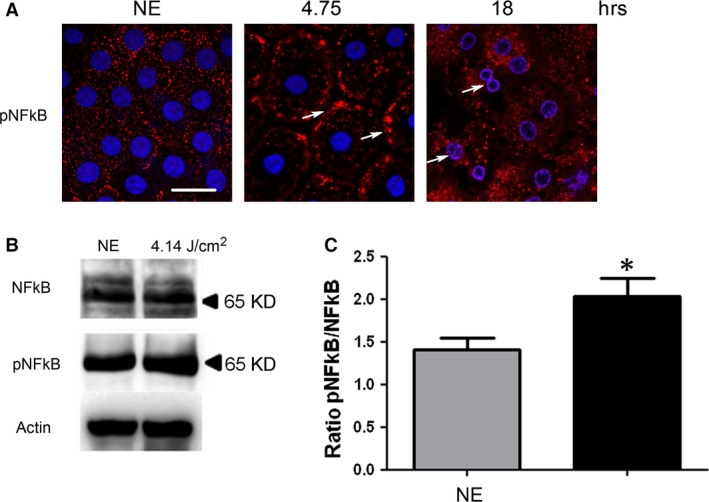Figure 3.

NFkB activation after LED exposure. Male Wistar rats aged 7 weeks (n = 4) were exposed to white LED for 4.75 hrs and 18 hrs. NE: Non‐exposed rats. (A) At the end of the exposure period, the RPE was flat‐mounted and immunostained with anti‐phospho‐NFkB (ser 311). The RPE was further analysed by double staining with DAPI by confocal microscopy. Scale bar represents 20 μm. The white arrows point pNFkB at the plasma membrane (4.75 hrs) and nuclear localization (18 hrs). (B) After 4.75 hrs (4.14 J/cm2) of light exposure, the eyes were enucleated, the RPE dissected, extracted with M‐PER buffer and loaded on the top of a 10% SDS–PAGE, transferred onto a nitrocellulose membrane and probed for anti‐NFkB (upper panel), anti‐phospho‐NFkB (ser 311) (middle panel) and anti‐actin antibody as a charge control (lower panel). (C) The histogram shows a quantification of NFkB phosphorylation expressed as a ratio to NFkB normalized to actin. Values are significantly different *=P < 0.1.
